
The Water Recycling Revolution
Published by Rowman & Littlefield
An imprint of The Rowman & Littlefield Publishing Group, Inc.
4501 Forbes Boulevard, Suite 200, Lanham, Maryland 20706
www.rowman.com
86-90 Paul Street, London EC2A 4NE, United Kingdom
Copyright 2022 by William M. Alley and Rosemarie Alley
All rights reserved . No part of this book may be reproduced in any form or by any electronic or mechanical means, including information storage and retrieval systems, without written permission from the publisher, except by a reviewer who may quote passages in a review.
British Library Cataloguing in Publication Information Available
Library of Congress Cataloging-in-Publication Data
Names: Alley, William M., author. | Alley, Rosemarie, author.
Title: The water recycling revolution : tapping into the future / William M. Alley and Rosemarie Alley.
Description: Lanham : Rowman & Littlefield, 2022. | Includes bibliographical references and index. | Summary: Tells the story of recycled wastewater, examines the pros and cons, and explores its future potential Provided by publisher.
Identifiers: LCCN 2021040393 (print) | LCCN 2021040394 (ebook) | ISBN 9781538160411 (cloth) | ISBN 9781538160428 (epub)
Subjects: LCSH: Water reuseUnited States. | SewagePurificationUnited States. | WaterPurificationUnited States.
Classification: LCC TD429.A425 2022 (print) | LCC TD429 (ebook) | DDC 628.1/62dc23
LC record available at https://lccn.loc.gov/2021040393
LC ebook record available at https://lccn.loc.gov/2021040394
 The paper used in this publication meets the minimum requirements of American National Standard for Information SciencesPermanence of Paper for Printed Library Materials, ANSI/NISO Z39.48-1992.
The paper used in this publication meets the minimum requirements of American National Standard for Information SciencesPermanence of Paper for Printed Library Materials, ANSI/NISO Z39.48-1992.
To the many dedicated public servants who daily safeguard our essential water services.
Contents
Guide
We greatly benefited from discussions with many individuals who generously gave of their time to share their knowledge and insights about water reuse. Key among these are Greg Baker, Laura Belanger, Robert Beltran, Brian Biesemeyer, Taylor Chang, Dave Colvin, Jason Dadakis, Lisa Darling, John Fabris, Anthony Fellow, Marco Gonzalez, Earle Hartling, Todd Hartman, Ted Henifin, Roy Herndon, Wayne Hill, Adam Hutchinson, Ted Johnson, Paula Kehoe, Andy Kricun, Keith Lewinger, Richard Luthy, Mark Marlowe, Melissa McChesney, Melissa Meeker, Mark Millan, Christina Montoya, Seung Park, Austa Parker, Jim Poff, Gayathri RamMohan, Bruce Reznik, Sybil Sharvelle, Bahman Sheikh, Ann Shortelle, Marsi Steirer, Patricia Tennyson, Mark Tettemer, Bruce Thomson, Gilbert Trejo, Shane Trussell, William Van Wagoner, Chuck Weber, and Bart Weiss. At Rowman & Littlefield, we are grateful to Suzanne Staszak-Silva, who was an enthusiastic supporter of the project from the start. We also thank Brianna Westervelt and Brennan Knight for their support during the production process. The perspectives on water reuse and any errors are ours alone.
Every day in cities across the country, billions of gallons of municipal wastewater (aka sewage) are treated and discharged into a nearby waterbody. Some of the wastewater is recycled. But, in the scheme of things, the total amount is just a drop in the bucket. Less than 1 percent of U.S. water demand is currently being met through water reuse. Theres plenty of room for expansion as urban population growth, environmental needs, and climate change pressure drinking water supplies of cities across the country, as well as worldwide.
While nonpotable uses, such as landscape irrigation, are mostly non-controversial, its a different story for recycling wastewater for potable uses. From the earliest human settlements, there has been a taboo against mixing sewage and drinking water. This automatic reaction runs so deep that its essentially in our DNA. The discovery that waterborne pathogens cause diseases like cholera upped the ante.
In recent years, humans have begun to turn this age-old taboo on its head by using advanced-treated wastewater to supplement a citys drinking water supply. This increasingly widespread practice, known as potable reuse, qualifies as nothing less than a drinking water revolution. In this book, we track the story of this development, examine the pros and cons, and explore its future potential. Nonpotable reuse is addressed along the way.
Any number of challenges and obvious questions arise when a water utility is exploring the possibility of potable reuse. How do you get people to overcome the visceral reaction known as the Yuck Factor and not only drink, but also appreciate, recycled wastewater? What motivates water utilities to consider potable reuse, which not long ago was considered the solution of last resort? Which is better: Direct potable reuse that connects recycled wastewater directly to the drinking water system, or indirect potable reuse that releases purified water to an environmental buffer, such as a lake or groundwater, from which withdrawals are treated to meet potable water standards? And what about all those pharmaceuticals and personal care products that people casually flush down the drain, or that are shed from our bodies?
There are also less obvious questions. Will diverting discharges from a wastewater-treatment plant damage downstream users or ecosystems that previously depended on that water? What about water rights? Why not just use the treated wastewater for nonpotable uses, such as irrigating lawns and parks? For coastal cities, why not just turn to desalination of the virtually unlimited ocean water at their doorstep? What are the implications for climate change and drought mitigation?
We explore these and other questions as we investigate a variety of places across the country that have turned to potable reuse. Some are obvious, such as California, Arizona, and Texas. Others may come as a surprise, such as Georgia, Virginia, and a small mountain town in New Mexico. Each has a unique story of what led them to develop potable reuse for securing their drinking water supplyas well as the challenges they had to overcome. A commonality for nearly all of them was selling their customers on the idea.
The issue is widely relevant. In the same way that the electric car is changing the future of transportation, potable reuse is part of the sustainable city of the future in which we rethink waste water as a renewable resource. Depending on where you live, work, or travel, when you flush the toilet or take your next drink of water, you may now or sometime in the near future be participating in this water-recycling revolution.
WASTEWATER TREATMENT 101
For those new to this topic, lets take a brief look at some basic waste-water treatment concepts and terminology (those familiar with waste-water treatment may want to go directly to ). First, unless we note otherwise, wastewater refers to the municipal wastewater that comes from households, businesses, hospitals, and industrial facilities hooked up to the sewer system. Notably and contrary to common view, human waste is a small percentage of this wastewater.
Conventional wastewater treatment is relatively simple in concept. In a preliminary step, grates and screens catch large materials and grit as wastewater enters the treatment facility. All kinds of things find their way into wastewaterrags, toys, golf balls, you name it. So-called flushable wipes have been a particular bane. After the preliminary screening come primary and secondary treatments.
Next page

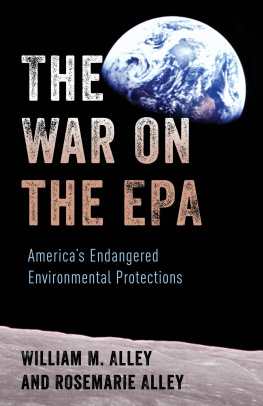
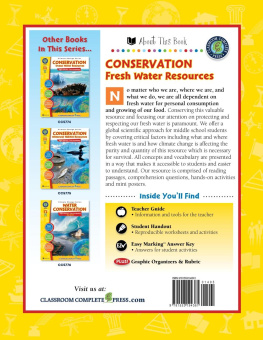
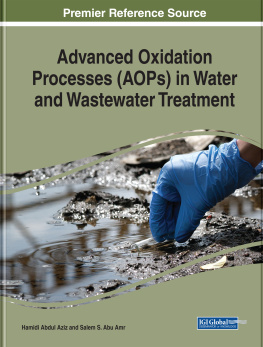
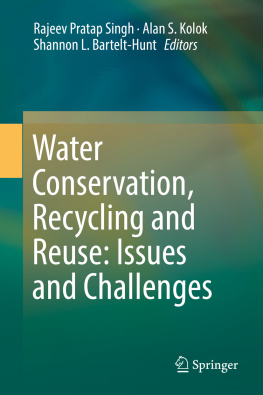
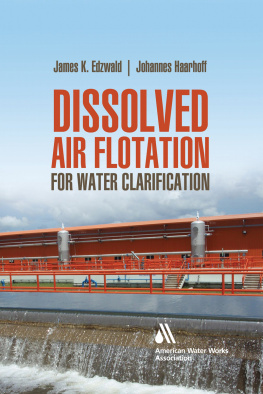
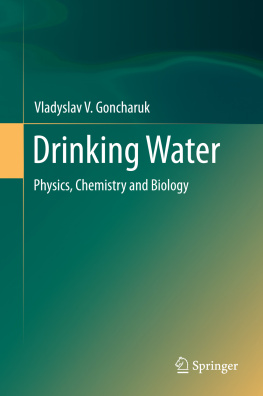
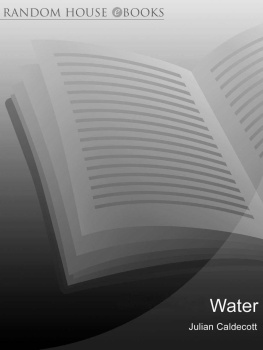

 The paper used in this publication meets the minimum requirements of American National Standard for Information SciencesPermanence of Paper for Printed Library Materials, ANSI/NISO Z39.48-1992.
The paper used in this publication meets the minimum requirements of American National Standard for Information SciencesPermanence of Paper for Printed Library Materials, ANSI/NISO Z39.48-1992.